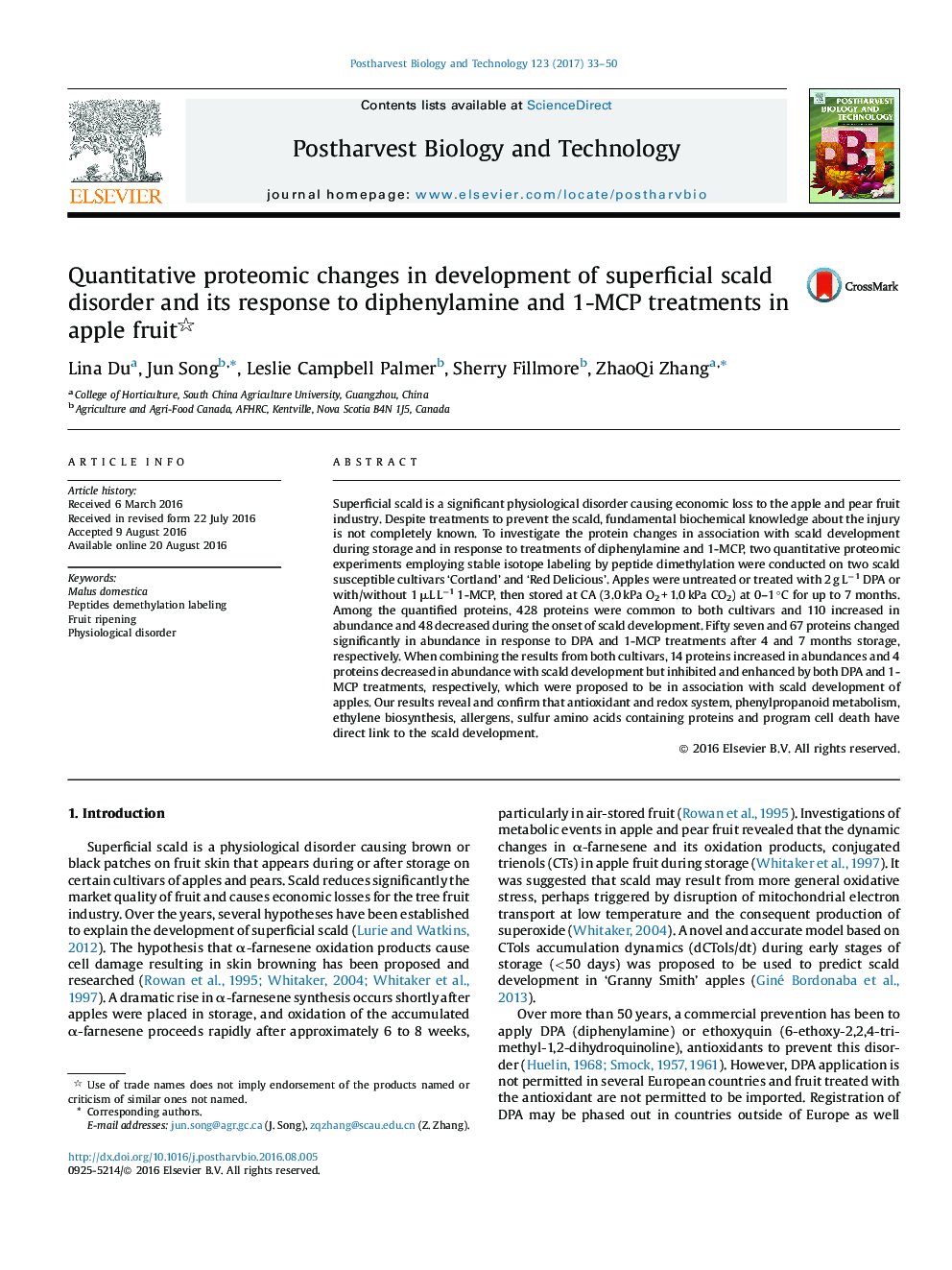| کد مقاله | کد نشریه | سال انتشار | مقاله انگلیسی | نسخه تمام متن |
|---|---|---|---|---|
| 4517670 | 1624971 | 2017 | 18 صفحه PDF | دانلود رایگان |
• Quantitative change in proteins during scald development in apples is reported.
• Quantitative changes in proteins in response to DPA and 1-MCP treatment are revealed.
• The proteomic network of scald development and control mechanism are demonstrated.
Superficial scald is a significant physiological disorder causing economic loss to the apple and pear fruit industry. Despite treatments to prevent the scald, fundamental biochemical knowledge about the injury is not completely known. To investigate the protein changes in association with scald development during storage and in response to treatments of diphenylamine and 1-MCP, two quantitative proteomic experiments employing stable isotope labeling by peptide dimethylation were conducted on two scald susceptible cultivars ‘Cortland’ and ‘Red Delicious’. Apples were untreated or treated with 2 g L−1 DPA or with/without 1 μL L−1 1-MCP, then stored at CA (3.0 kPa O2 + 1.0 kPa CO2) at 0–1 °C for up to 7 months. Among the quantified proteins, 428 proteins were common to both cultivars and 110 increased in abundance and 48 decreased during the onset of scald development. Fifty seven and 67 proteins changed significantly in abundance in response to DPA and 1-MCP treatments after 4 and 7 months storage, respectively. When combining the results from both cultivars, 14 proteins increased in abundances and 4 proteins decreased in abundance with scald development but inhibited and enhanced by both DPA and 1-MCP treatments, respectively, which were proposed to be in association with scald development of apples. Our results reveal and confirm that antioxidant and redox system, phenylpropanoid metabolism, ethylene biosynthesis, allergens, sulfur amino acids containing proteins and program cell death have direct link to the scald development.
Journal: Postharvest Biology and Technology - Volume 123, January 2017, Pages 33–50
